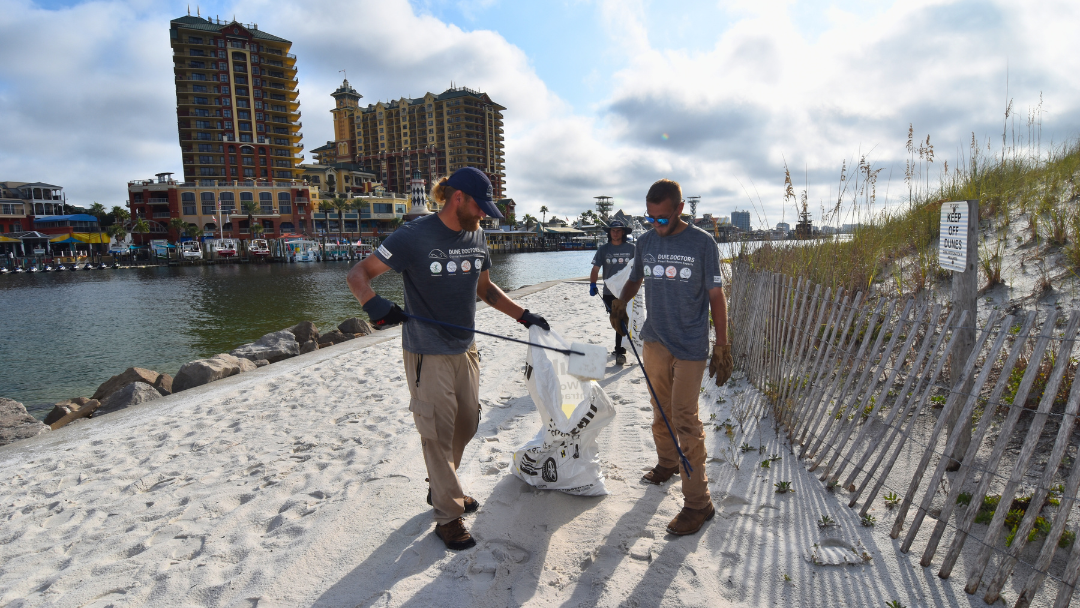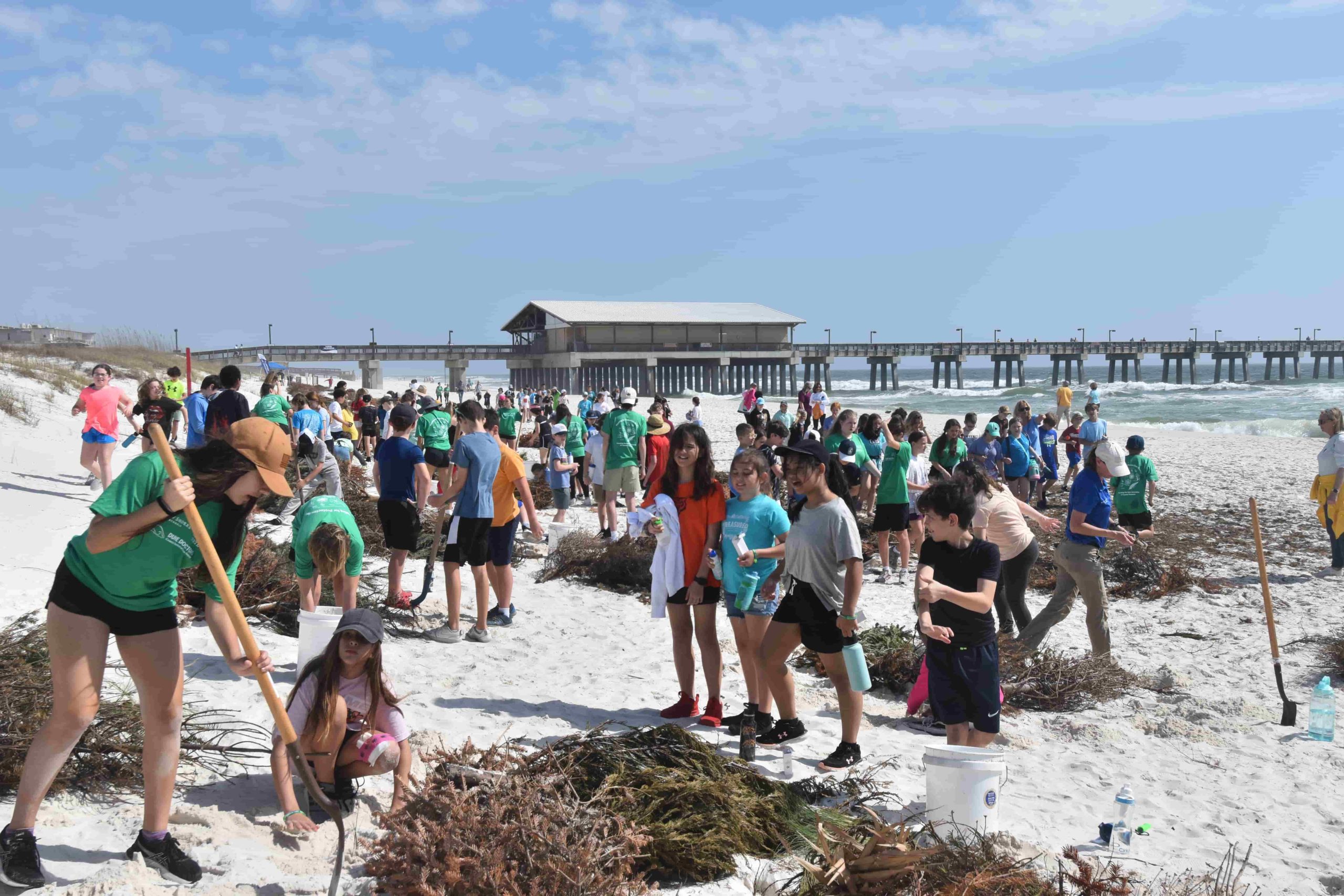Turtle Nesting Season has Two Sections
Five different species of sea turtles nest on beaches along the gulf coast every summer during turtle nesting season, and 90% of those turtles will do so along the coast of Florida and Alabama. Kelly Reetz (an Alabama Gulf State Park Naturalist) reports that turtle season lasts from the first of May through the end of October. The season is divided into two timelines. She states that from the beginning of May to the end of August, adult female turtles nest. While from mid-July to the end of October, the eggs hatch. Communities in nesting areas are preparing to welcome these reptile mommas. We encourage you to download this pdf guide by the Fish & Wildlife Service and read it for more information on how to enjoy the beach while being protective of your marine neighbors. There are many ways you can help these lovely creatures. From reducing coastal lighting to adopting a turtle, we invite you to join forces in employing ways to help ensure the 2019 nesting season goes smoothly.
Leave No Trash Behind on The Beach
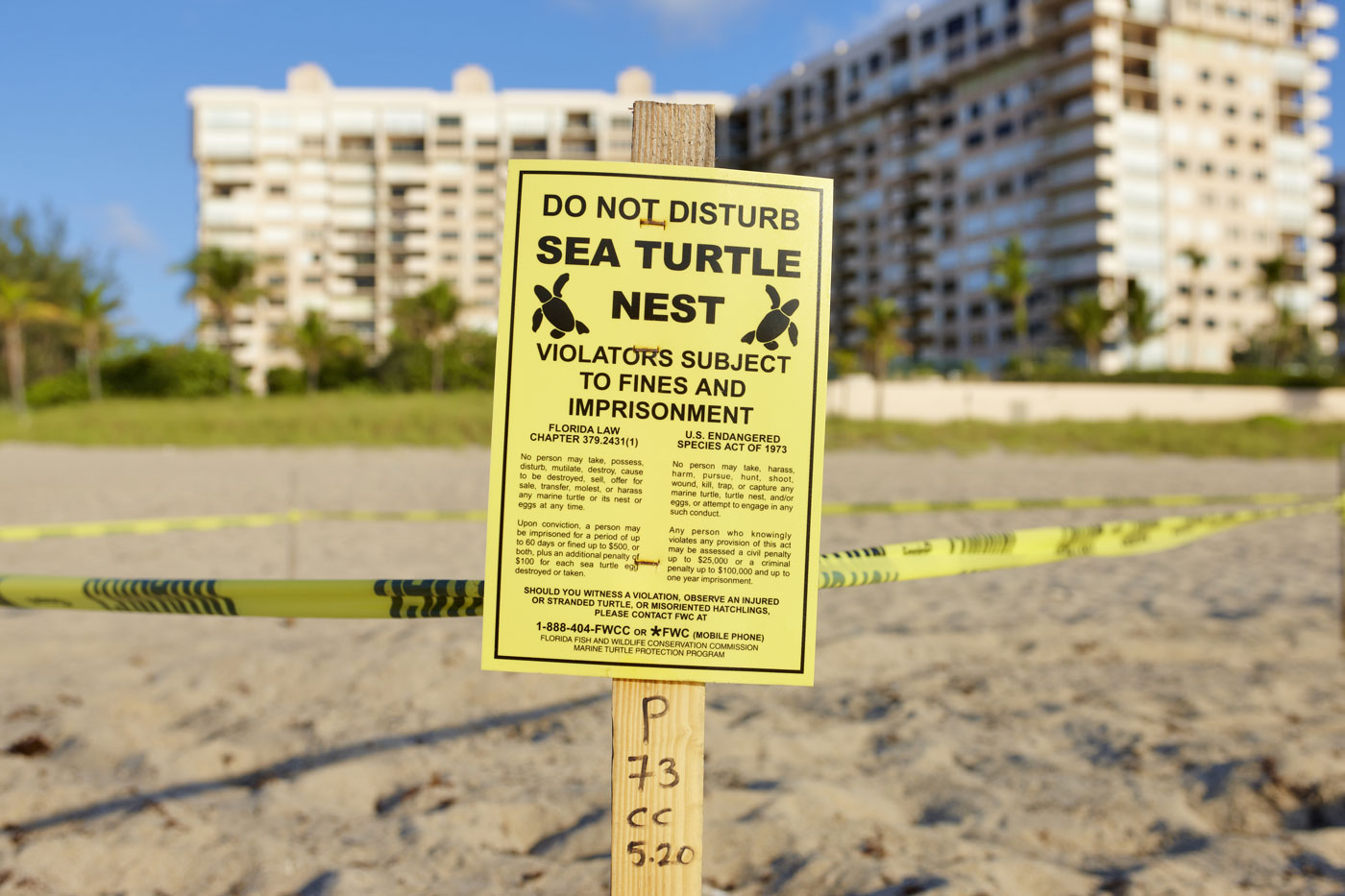 According to the Sea Turtle Conservancy (the world’s oldest sea turtle conservation and research organization), there are a few steps every coastal property owner should take to provide successful nesting grounds for the turtles. The sea turtle eggs and hatchlings face a wide variety of predators. One of the leading causes of hatchling deaths are raccoons. These predators destroy thousands of sea turtle nests every year. We should do what we can to minimize predator presence. First, proactively remove any leftover trash on the beach that will attract unwanted animals. Next, avoid leaving pet food (intended for dogs and cats) outside. These food sources attract wildlife that may impact turtle nests.
According to the Sea Turtle Conservancy (the world’s oldest sea turtle conservation and research organization), there are a few steps every coastal property owner should take to provide successful nesting grounds for the turtles. The sea turtle eggs and hatchlings face a wide variety of predators. One of the leading causes of hatchling deaths are raccoons. These predators destroy thousands of sea turtle nests every year. We should do what we can to minimize predator presence. First, proactively remove any leftover trash on the beach that will attract unwanted animals. Next, avoid leaving pet food (intended for dogs and cats) outside. These food sources attract wildlife that may impact turtle nests.
Do Your Best to Dim Beachfront Lights
In addition to routine trash removal, the Sea Turtle Conservancy urges property owners to avoid bright lights on the coast. Scientists theorize that sea turtles are phototactic (attracted to light). They appear to be guided by an instinct to follow the brightest light–believing it is the moonlight reflecting off of the ocean. However, due to coastal light pollution, thousands of hatchlings and adult turtles become disoriented by the presence of these bright, unnatural lights. This causes them to move inland (instead of out to sea) –often to their premature deaths. The Sea Turtle Conservancy also shares that sea turtles are nocturnal nesters and seek dark locations to lay their eggs. As of 2017, the Florida Fish and Wildlife Conservation Commission (FWC) requires that all cases of hatchling and adult female disorientation be recorded. There is a live tracking app with daily updates of every documented disorientation event on the Floridian coast.
Turtle Disorientation Cases in Florida
The bottom line is that counties with strict lighting regulations report fewer turtle disorientations. To illustrate this, refer to the FWC report for the number of documented disorientation cases of loggerheads in Florida per county from 2013 through 2017. Okaloosa County shifted towards using sea turtle-friendly lights and had zero disorientation cases for adults and only one case of hatchling disorientation in 2017. By comparison, Broward County ranked highest out of all Florida counties in 2017 with documented disorientation incidents at 805 total affected turtles- 764 hatchlings and 41 adults. Communities that deal with heavy light pollution opt to relocate the nests to darker grounds. In 2018, Panama City Beach reported that 72% of all its hatchlings were found moving inland. Therefore, to improve the hatchlings’ odds of survival, they contracted volunteers with Turtle Watch to monitor the nests and safely move them to a darker beach. Check out the FWC report to see how different Florida counties are ranked by its number of disorientation cases for leatherbacks and green turtles. Also, you can team up with your local preservation effort and apply in early 2020 to the Sea Turtle License Plate Grant for financial aid for Florida marine turtle permit-related activities.
What Is the Sea Turtle Nesting Process Like?
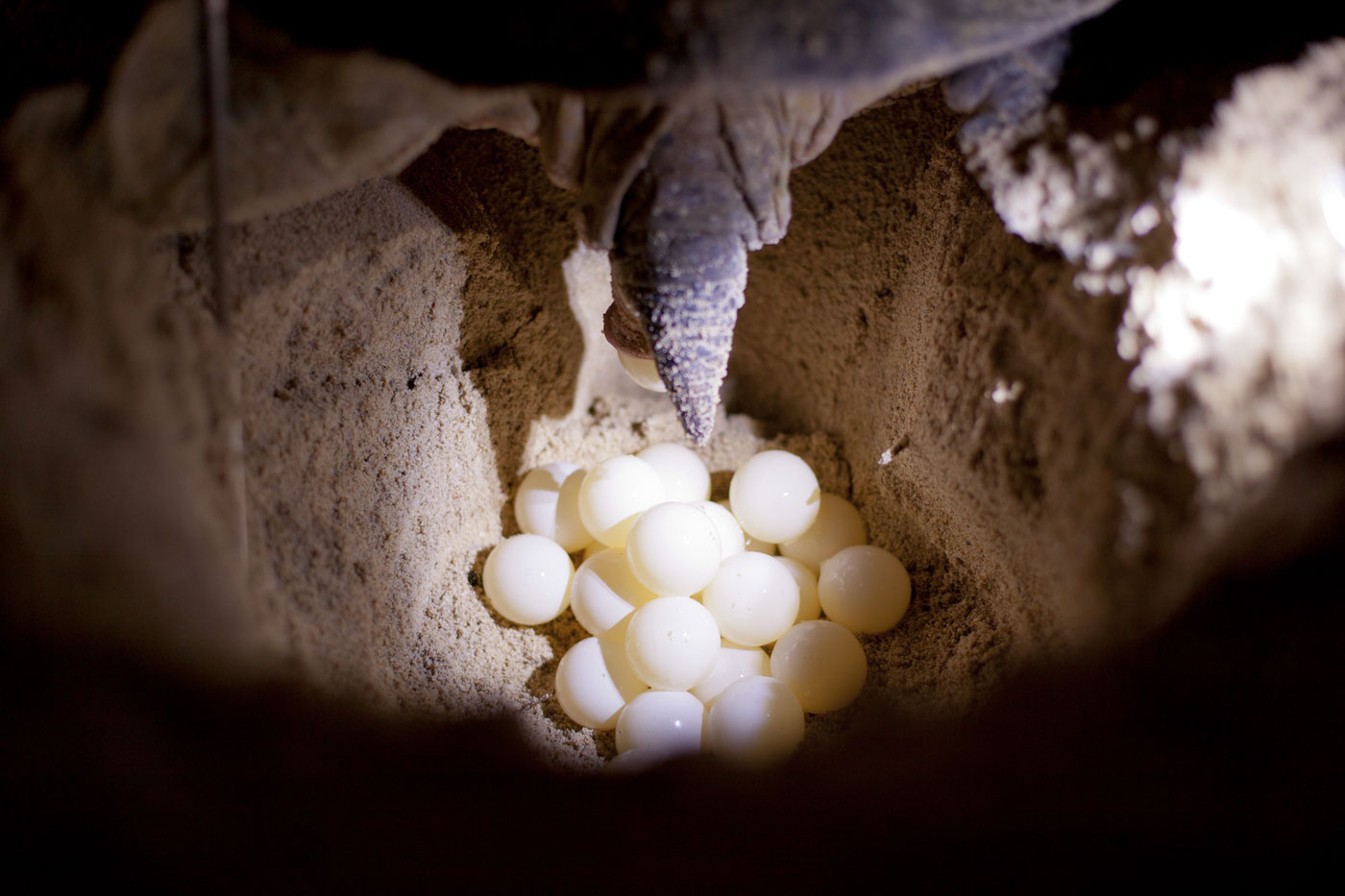 The anatomy of sea turtles and their reproductive instincts are part of what makes these animals so fascinating. According to an in-depth Q&A provided by the Sea Turtle Conservancy, sea turtles lay an average of 110 eggs in a single nest and lay multiple nests per season. That’s a lot of eggs, just for one turtle! Once female turtles select the exact spot for their nest, they dig a body pit using all four flippers and then construct an egg chamber by slowly scooping away sand using their back two flippers. The egg chamber is an impressive structure for an aquatic animal that does not usually burrow and is located two feet below the soil’s surface. Once the chamber is complete, the turtle’s ovipositor (an egg-laying organ) begins contracting and depositing one to four eggs. When the turtle is finished, she covers both the nest and her trail to lessen the chance predators will find the eggs. Sea turtles must nest on land because the eggs breathe through a membrane that cannot be submerged in water.
The anatomy of sea turtles and their reproductive instincts are part of what makes these animals so fascinating. According to an in-depth Q&A provided by the Sea Turtle Conservancy, sea turtles lay an average of 110 eggs in a single nest and lay multiple nests per season. That’s a lot of eggs, just for one turtle! Once female turtles select the exact spot for their nest, they dig a body pit using all four flippers and then construct an egg chamber by slowly scooping away sand using their back two flippers. The egg chamber is an impressive structure for an aquatic animal that does not usually burrow and is located two feet below the soil’s surface. Once the chamber is complete, the turtle’s ovipositor (an egg-laying organ) begins contracting and depositing one to four eggs. When the turtle is finished, she covers both the nest and her trail to lessen the chance predators will find the eggs. Sea turtles must nest on land because the eggs breathe through a membrane that cannot be submerged in water.
How Often Do Sea Turtles Nest?
The nesting frequency of sea turtles is unique to each species*
| Number of Nests | Interval between Nests | |
| Loggerheads | 2-3 nests | 2-3 weeks |
| Green Sea Turtles | 3-4 nests | 2-3 weeks |
| Leatherbacks | 5-7 nests | 10 days |
*Data provided by the Broward County Conservation Program
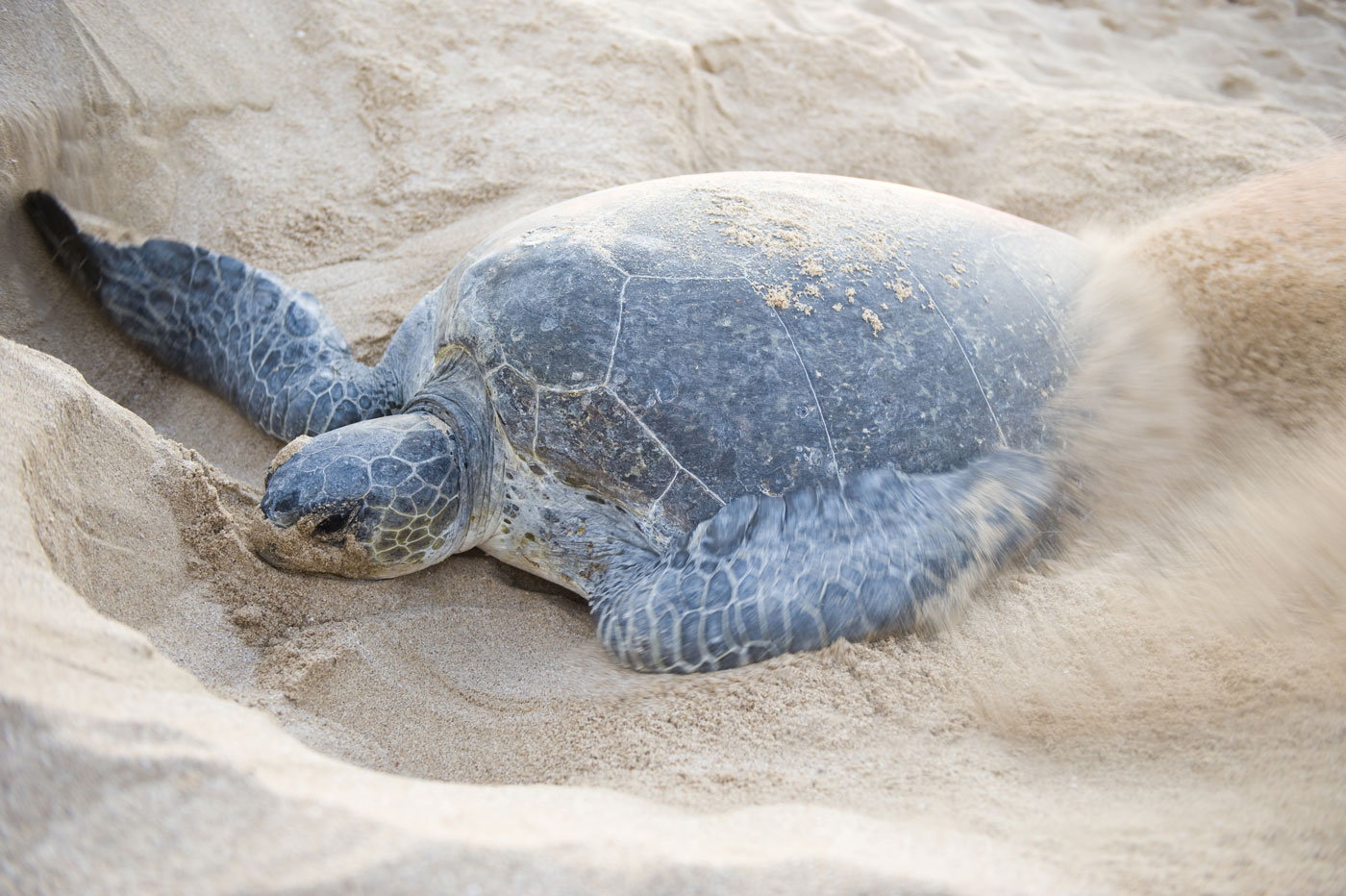 Sea turtles do not nest yearly but every second or third year. If the circumstances are favorable, they will nest within five to thirty-five miles from the region where they were hatched or have nested in the past. Several factors influence the frequency of sea turtle nesting, including the environment, food availability, genetic factors, presence of parasites, and other variables. Female sea turtles do not return to any of their nests. Once a hatchling is born, it is entirely on its own.
Sea turtles do not nest yearly but every second or third year. If the circumstances are favorable, they will nest within five to thirty-five miles from the region where they were hatched or have nested in the past. Several factors influence the frequency of sea turtle nesting, including the environment, food availability, genetic factors, presence of parasites, and other variables. Female sea turtles do not return to any of their nests. Once a hatchling is born, it is entirely on its own.
What Is the Mating Process Like?
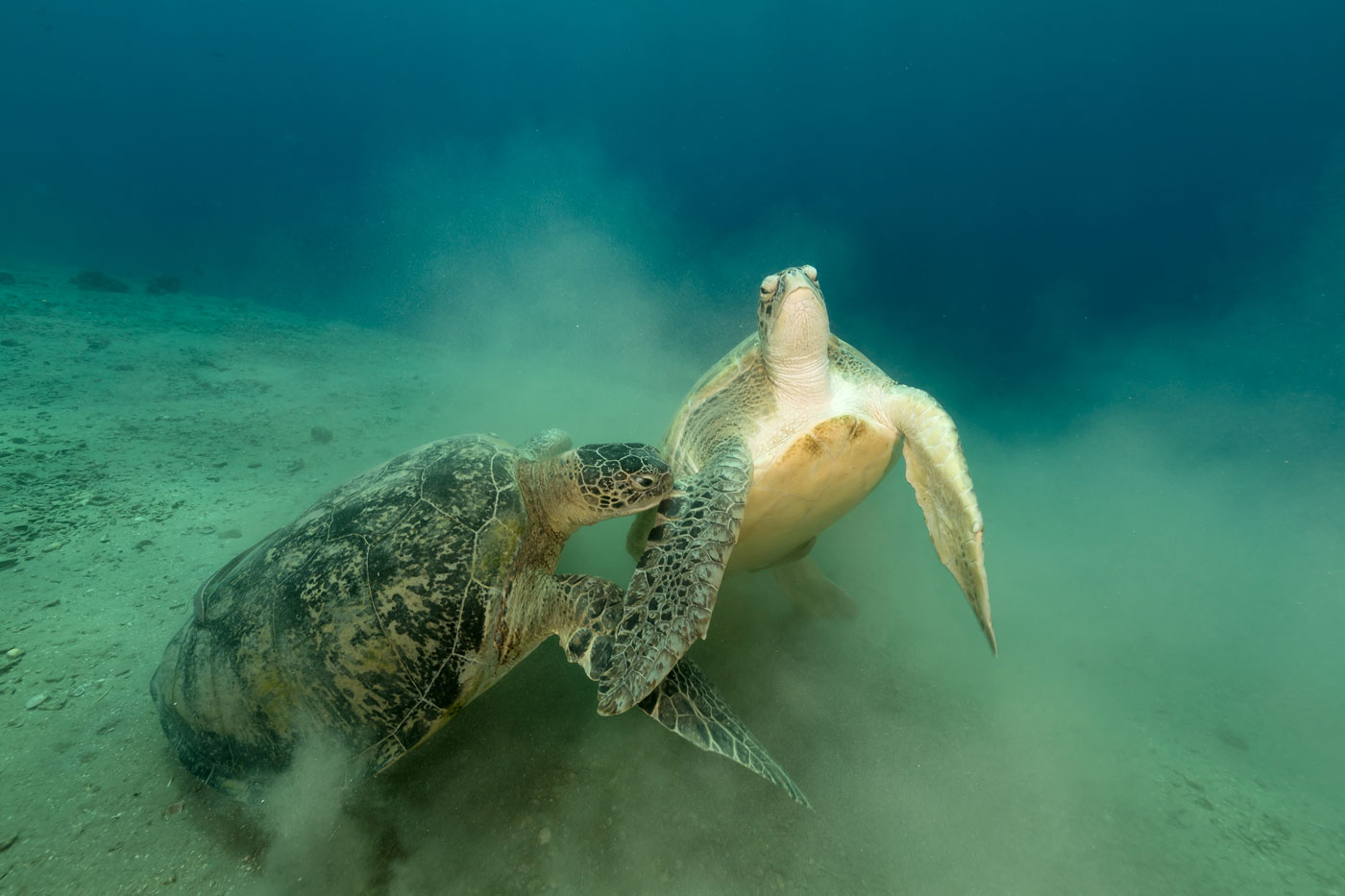 Generally speaking, sea turtles are solitary creatures. They usually only come together to mate. Depending on the species, sea turtles reach sexual maturity between 10 to 50 years after hatching, according to a sea turtle life cycle fact sheet provided by SEE Turtles (a conservation group that helps protect turtles through ecotourism). After hatching, sea turtles venture out during their pelagic (open sea) phase. This phase of a sea turtle’s life cycle is also commonly referred to by scientists as the “lost years.” This name is a result of how difficult it is to track the movements of the young turtles while they forage over large areas of the open ocean. Once they reach sexual maturity, the sea turtles migrate back to the coast to mate and nest. Female sea turtles will mate with multiple males until they have collected enough sperm to fertilize all of their clutches (the number of eggs in a nest) for the season.
Generally speaking, sea turtles are solitary creatures. They usually only come together to mate. Depending on the species, sea turtles reach sexual maturity between 10 to 50 years after hatching, according to a sea turtle life cycle fact sheet provided by SEE Turtles (a conservation group that helps protect turtles through ecotourism). After hatching, sea turtles venture out during their pelagic (open sea) phase. This phase of a sea turtle’s life cycle is also commonly referred to by scientists as the “lost years.” This name is a result of how difficult it is to track the movements of the young turtles while they forage over large areas of the open ocean. Once they reach sexual maturity, the sea turtles migrate back to the coast to mate and nest. Female sea turtles will mate with multiple males until they have collected enough sperm to fertilize all of their clutches (the number of eggs in a nest) for the season.
Sea Turtles Face Significant Risks
Under the U.S. Endangered Species Act (ESA), all sea turtles found in American waters are designated as threatened or endangered. When deemed threatened, the species is considered likely to become endangered. When a species is labeled as endangered, they are designated at risk of extinction. Sea turtles encounter both onshore and offshore challenges that are difficult to overcome. Many prime sea turtle nesting sites have been reduced or destroyed by extensive development. To protect the species, coastal communities need to be mindful of onshore activities in nesting zones.
Volunteering Opportunities for This Upcoming Summer
This season, consider volunteering with your local conservation group. Stay in a cozy cabin or cottage close to the sea turtle action at Gulf State Park. If you are looking into overseas travel destinations, ecotourism is a way to volunteer while enjoying your vacation. Follow this link for a list of international sea turtle conservation organizations that need your help. Because these animals nest on beautiful beaches, working with sea turtles is fun and rewarding! Whether your contribution is simply picking up trash left on the beach or taking time off from work to volunteer in an ecotourism event, every effort counts towards achieving the long-term goal of sea turtle preservation.
Sources:
“Disorientations.” Florida Fish And Wildlife Conservation Commission, myfwc.com/wildlifehabitats/wildlife/sea-turtle/lighting/disorientations/.
“Life Cycle of A Sea Turtle.” SEE Turtles, www.seeturtles.org/sea-turtle-life-cycle.
“Sea Turtle Nesting Behavior.” NSU, cnso.nova.edu/seaturtles/nesting-behavior.html.
“Tips for Sea Turtle Nesting Season May – October – Sea Turtle Conservancy.” Sea Turtle Conservancy, 1 May 2018, conserveturtles.org/nesting-season-is-may-october/.
